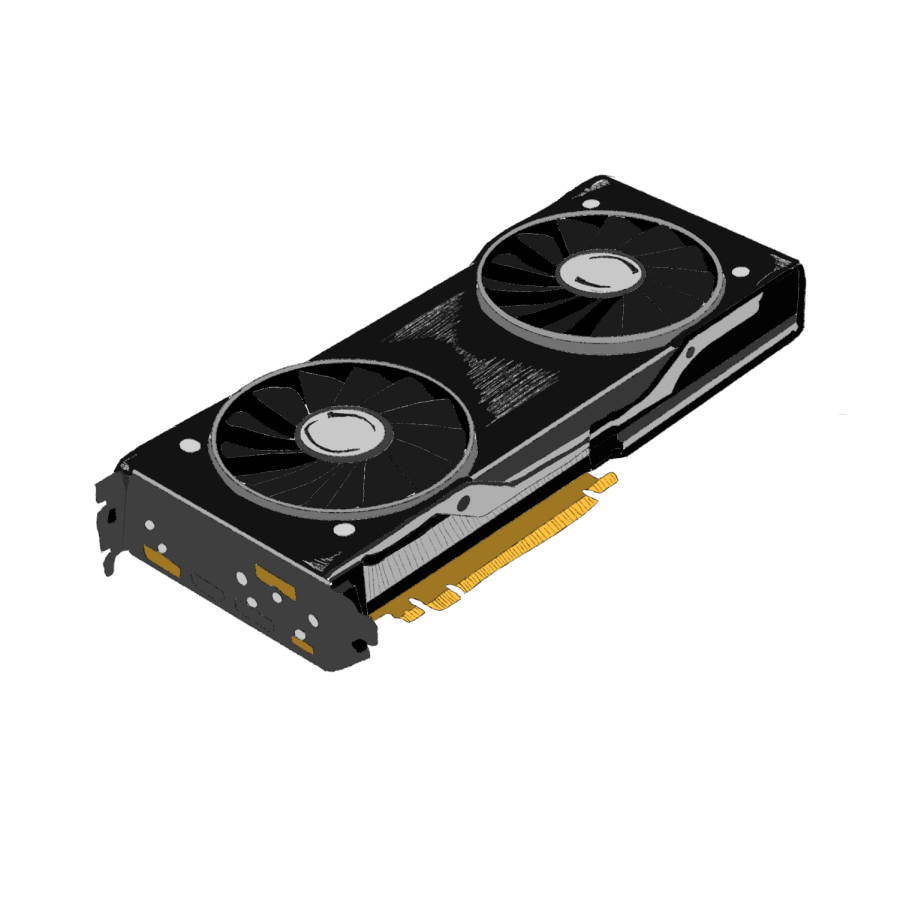Consumers lose patience with inflated prices for GPUs, CPUs
March 18, 2023
Accompanying the recent release of NVIDIA’s 40 series of graphics cards (GPUs) and AMD’s 7000 series of Central Processing Units (CPUs), a tsunami of backlash has crashed on – and done no damage to – NVIDIA, AMD and Intel’s headquarters. Whether it is the high prices, the questionable marketing tactics or undershipping, it seems that every major tech corporation has been caught with their hands in the microchip jar.
NVIDIA’s 40 series currently features the 4070-Ti, 4080 and the 4090, with the 4060, 4070 and 4090-Ti expected to be released throughout the first half of this year. NVIDIA’s manufacturers’ suggested retail price (MSRP) established these three cards at $799, $1199 and $1599 respectively, with physical differences that do not represent a curve so extreme.
While most gross profit margins range from 50-70 percent, the cost to make a 4080 and/or 4090 is believed to be under a quarter of the price that they are selling them for. Back in 2020-2022, when crypto mining was at its peak – and GPUs were being bought in quantities similar to donuts – retailers could get away with charging this much, especially for the higher-end models. Considering the continued disappointment in response to these cards, and the sheer number left accumulating dust on shelves, it is clear that the average consumer is hesitant and often not willing to burn a hole in their bank account.
As much as consumers can point directly at NVIDIA, most of the cost difference occurs as a result of several levels of upcharging; NVIDIA sells the physical cards and video random access memory to partners, who then add their own cooling systems and software before shipping them out to retailers. NVIDIA’s quarterly gross profit margin stays within a fair range, as the 40 series is not the only thing that they sell; still, a lot of issues could be fixed if NVIDIA made the decision to sell directly to customers, even their “founder edition” cards often pass through retailers and match what secondary suppliers charge. The real issue is the lack of good competition for these high-end models, which allows the prices to stay where they are and limits consumers’ options; buyers who want a high-end GPU have about four choices, all of which are near or above $1,000.
The outrage got much worse when the CEO of AMD – the only “competitor” to NVIDIA’s GPUs, and Intel’s CPUs – Lisa Su informed investors, “We undershipped in Q3, we undershipped in Q4. We will undership, to a lesser extent, in Q1.”
At first glance, many people believed that AMD was undershipping to falsify a shortage. While this was not the intent and would be illegal, this statement from Su still raises eyebrows; if there is so much stock and so little demand to the point that retailers would be overwhelmed with supply, then that certainly means prices could be lowered further. If one company becomes competitive with its high-end products, it would force others to follow suit, leading to more products being sold, better prices and, most of all, happy consumers.


